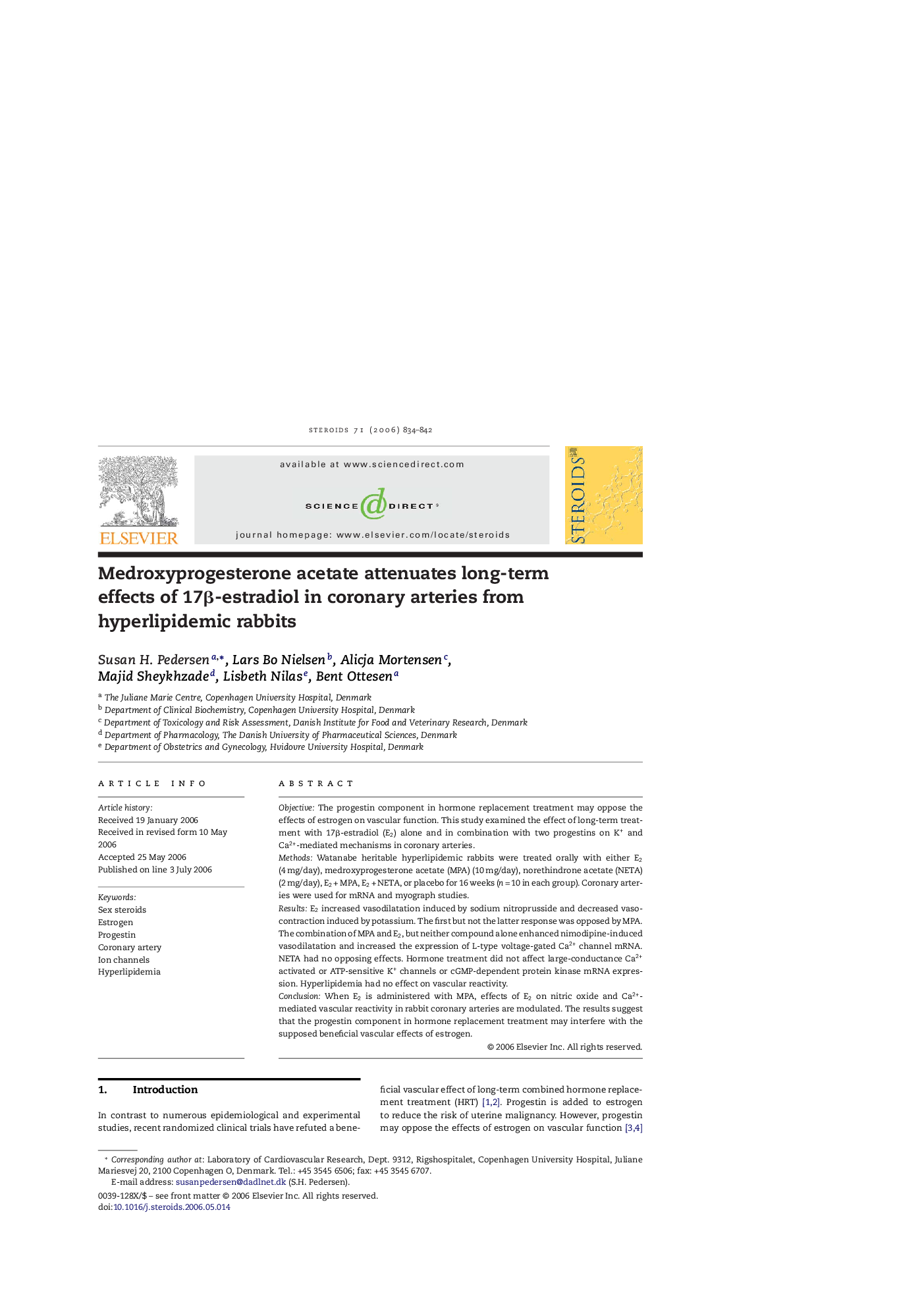| Article ID | Journal | Published Year | Pages | File Type |
|---|---|---|---|---|
| 2028904 | Steroids | 2006 | 9 Pages |
ObjectiveThe progestin component in hormone replacement treatment may oppose the effects of estrogen on vascular function. This study examined the effect of long-term treatment with 17β-estradiol (E2) alone and in combination with two progestins on K+ and Ca2+-mediated mechanisms in coronary arteries.MethodsWatanabe heritable hyperlipidemic rabbits were treated orally with either E2 (4 mg/day), medroxyprogesterone acetate (MPA) (10 mg/day), norethindrone acetate (NETA) (2 mg/day), E2 + MPA, E2 + NETA, or placebo for 16 weeks (n = 10 in each group). Coronary arteries were used for mRNA and myograph studies.ResultsE2 increased vasodilatation induced by sodium nitroprusside and decreased vasocontraction induced by potassium. The first but not the latter response was opposed by MPA. The combination of MPA and E2, but neither compound alone enhanced nimodipine-induced vasodilatation and increased the expression of L-type voltage-gated Ca2+ channel mRNA. NETA had no opposing effects. Hormone treatment did not affect large-conductance Ca2+ activated or ATP-sensitive K+ channels or cGMP-dependent protein kinase mRNA expression. Hyperlipidemia had no effect on vascular reactivity.ConclusionWhen E2 is administered with MPA, effects of E2 on nitric oxide and Ca2+-mediated vascular reactivity in rabbit coronary arteries are modulated. The results suggest that the progestin component in hormone replacement treatment may interfere with the supposed beneficial vascular effects of estrogen.
